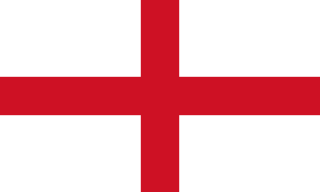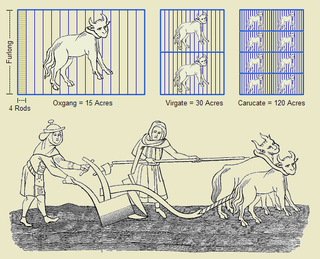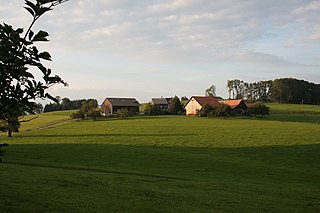
Braunston is a village and civil parish in the county of Northamptonshire, England. It has a population of 1,759. Braunston is situated just off the A45 main road and lies between the towns of Rugby and Daventry.

In the United Kingdom, a deserted mediaeval village (DMV) is a former settlement which was abandoned during the Middle Ages, typically leaving no trace apart from earthworks or cropmarks. If there are fewer than three inhabited houses the convention is to regard the site as deserted; if there are more than three houses, it is regarded as a shrunken mediaeval village. There are estimated to be more than 3,000 DMVs in England alone.

Bannaventa was a Romano-British fortified town which was situated on the Roman road of Watling Street, which today is known as the A5 trunk road. Bannaventa is 1 mile (1.6 km) northeast of the village of Norton in the English county of Northamptonshire. The Ordnance Survey grid reference for the centre of the town is SP612645.

Staverton is a village and civil parish in the south-west of Northamptonshire, England. It is 2.3 miles west of Daventry, 7.9 miles east of Southam and 15.3 miles east of Leamington Spa. It straddles the A425 road from Daventry to Leamington. The Jurassic Way long distance footpath between Banbury and Stamford passes through the village.

Dodford is a village in the county of Northamptonshire, England, within the Weedon Ward of Daventry District. The village is just north of the A45 road 1½ miles west of Weedon. The population of the civil parish at the 2011 Census was 203. It is 3½ miles east of Daventry and ten miles west of Northampton. It is also close to junction 16 of the M1 motorway. The parish consists of some 1,384 acres and is bounded on the east by the A5 trunk road which is the old Roman road of Watling Street. Most of the village and parish sits astride the valley of an east-flowing stream which is a tributary of the River Nene.

Charwelton is a village and civil parish about 5 miles (8 km) south of Daventry in Northamptonshire, England. Its toponym is derived from the River Cherwell beside which the village stands. The 2011 Census recorded the parish's population as 220.
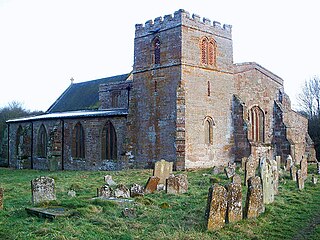
Wolfhampcote is an abandoned village and civil parish in the English counties of Warwickshire and Northamptonshire, which it straddles. The population of the civil parish at the 2011 census was 284.

North Runcton is a village and a civil parish in the English county of Norfolk. The village is 43.2 miles (69.5 km) west of Norwich, 4.3 miles (6.9 km) south-south-west of King's Lynn and 102 miles (164 km) north of London. The village is located a small distance south-west of the A47 between King's Lynn and Swaffham. The nearest railway station is at King's Lynn for the Fen Line which runs between King's Lynn and Cambridge. The nearest airport is Norwich International Airport. The parish of North Runcton in the 2001 census, has a population of 266, increasing to 549 at the 2011 Census. For the purposes of local government, the parish falls within the district of King's Lynn and West Norfolk.

Althorp is a lost village within the grounds of the Althorp estate in the English county of Northamptonshire. The village is recorded in the Domesday Book. In the 15th century, the manor was held by the Catesby family who were probably responsible for clearing the settlement, for by 1505, the records show that there were no tenants. In 1508, the parish, including the cleared settlement of Althorp, was sold to John Spencer of Wormleighton in Warwickshire. By 1577, the land in the parish had been divided into four large sheep pastures. Althorp remains a civil parish.

The lost village of Braunston Cleves or Fawcliff once stood north of the village of Braunston in the English county of Northamptonshire. The village stood on the southwest slope of Cleve’s hill within the parish of Braunston. The history of this settlement is virtually unknown. It is thought that the settlement was part of the 11th-century manor which belonged to William Trusbott. The settlement passed to his daughter, Agatha Meinfelin, who in turn left the village to Delapré Abbey in Northampton. A charter of Edward III confirming the possessions of Delapré Abbey mentions a place called Fawcliff near Braunston. Nothing is known of why the village was deserted but it had certainly been destroyed by the 18th century.

The lost village of Braunstonbury lies in low ground south-west of the village of Braunston in the English county of Northamptonshire. Its site is on the eastern bank of the River Leam, which also marks the border between Northamptonshire and Warwickshire. Adjacent to the site on the west side of the river Leam is the site of the lost village of Wolfhampcote which straddled the county border of both counties.

The lost village of Canons Ashby is located in ground to the north of Canons Ashby House in the English county of Northamptonshire. Today there is still a small village around the house but this is located away from the original settlement, since the original settlement is now just field occupied by a herd of cows.
Ascebi is the name of the medieval village that is the lost settlement, Canons Ashby itself is currently not lost at all and people can easily find it on any map.

The lost village of Coton is located around the environs of the hamlet of Coton and Coton Manor House in the English county of Northamptonshire.

The lost village of Church Charwelton lies south-east of the village of Charwelton in the English county of Northamptonshire. Its site is on the north-east bank of the River Cherwell. The Jurassic Way long-distance footpath passes across the site.

The deserted village of Glendon is in the English county of Northamptonshire. Its location was on land to the east of Glendon Hall, now within the parish of Rushton. Neighbouring towns include Rothwell, Kettering, Rushton and Desborough.
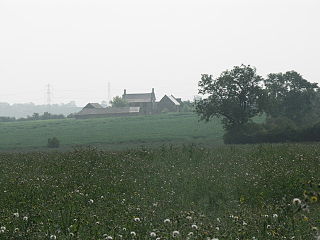
The deserted village of Wythmail is located 4.5 miles south of Kettering in the English county of Northamptonshire. The village of Orlingbury is 1.1 miles to the east. Wythmail was part of the parish of Orlingbury.
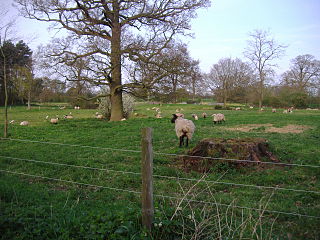
Alethorpe is a deserted medieval village site in the English county of Norfolk. The site is within the parish of Little Snoring in North Norfolk. It lies south-east of Little Snoring, around 2 miles (3.2 km) north-east of the town Fakenham and 23 miles (37 km) north-west of Norwich to the north of the A148 road. The village, which is one of around 200 lost settlements in Norfolk, was abandoned in the 16th century, probably as the consequence of the land being enclosed by the landlord of that time. It is occasionally referred to as Althorp in historical literature.
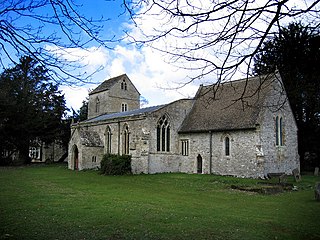
Radstone is a hamlet and civil parish in South Northamptonshire, about 2 miles (3 km) north of Brackley. The 2001 Census recorded a parish population of 54. At the 2011 Census the population of the hamlet remained less than 100 and was included in the civil parish of Whitfield.


